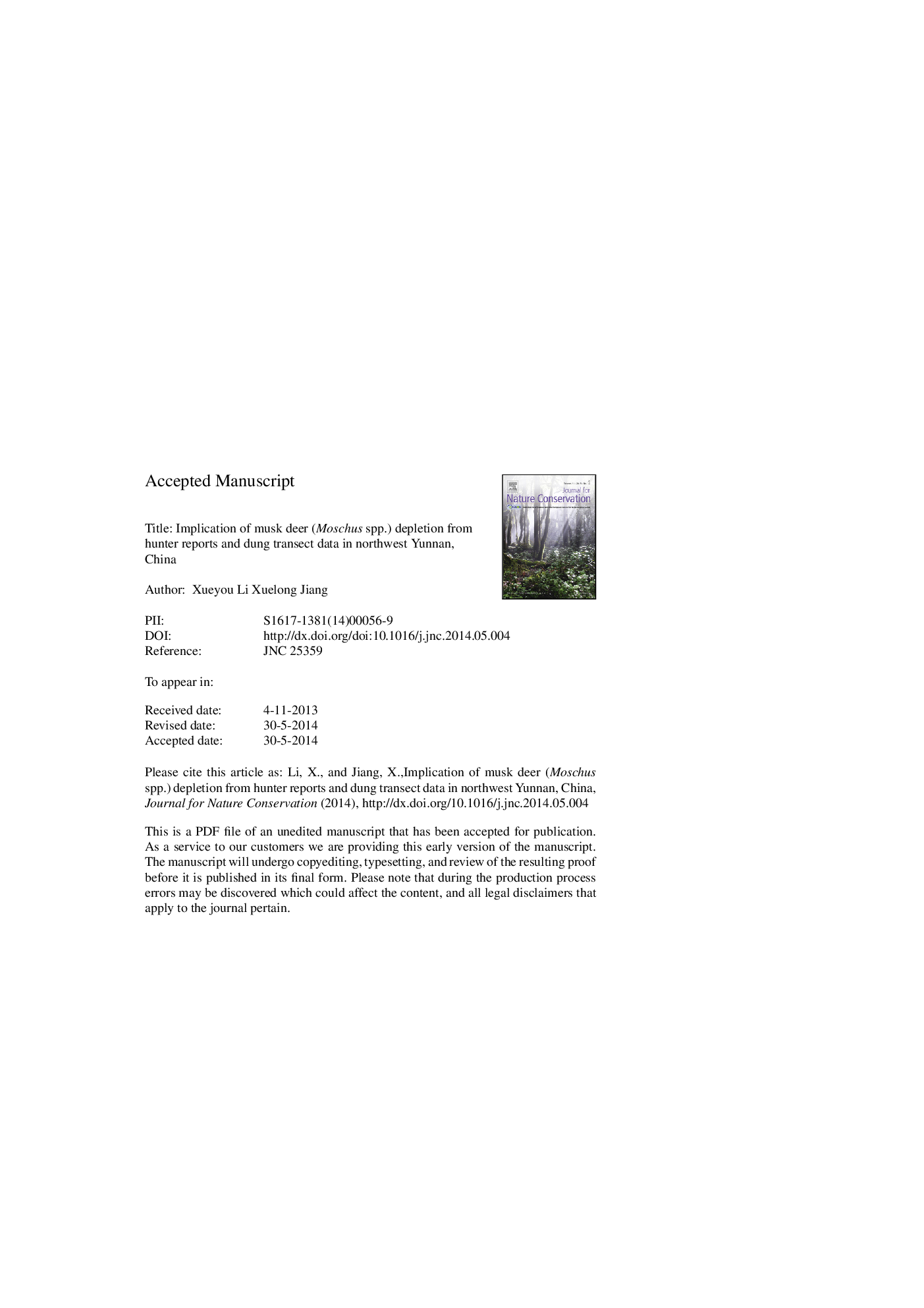| Article ID | Journal | Published Year | Pages | File Type |
|---|---|---|---|---|
| 6305467 | Journal for Nature Conservation | 2014 | 20 Pages |
Abstract
Musk deer (Moschus spp.) have been over-exploited leading to steep population declines. The demand for musk for its use in medicine and perfumery industries poses the biggest threat to musk deer. The present study aimed to assess the depletion level of musk deer over time in northwest Yunnan by using hunter reports and dung transect data. Hunters were asked to recall musk gland catch-effort changes between the early 1990s and over two years (January 2009 to December 2010). Surveys using dung transect methodology were conducted on musk deer population in poaching and non-poaching sites. The results obtained revealed that the hunting frequency is constant in the two periods. Annual musk gland catch per hunter significantly declined from 7.4 (SDÂ =Â 1.8) in the early 1990s to 0.7 (SDÂ =Â 0.9) over the 2009-2010 period. A significantly higher proportion of hunters used snares over the 2009-2010 period (74%) than in the early 1990s (18%). The majority of the informants (70%) reported that the average distance from the village at which hunters operated has increased over the later two year period. The mean dung encounter rate values in the non-poaching site were about six times higher than that in poaching sites. Hunter responses were consistent with dung transect data that suggest musk deer population is seriously compromised throughout its range in northwest Yunnan. The present study has shown that catch-effort data from hunter reports can provide pertinent information about the current hunting practices and problems of prey depletion and for design of conservation interventions for hunted species.
Keywords
Related Topics
Physical Sciences and Engineering
Earth and Planetary Sciences
Earth and Planetary Sciences (General)
Authors
Xueyou Li, Xuelong Jiang,
